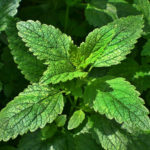Cover recess
In the covering zones, on dry and elevated places, the upper eye of the seedling is better placed 6-10 cm below the soil level. Then the sleeves will come straight out of the ground, without the stem. The bases of the sleeves in the first summer give an inclined position. This Bush is more convenient to hide.
Along the row make a stationary groove, where the bushes are laid for the winter. Even to the South, covering ditches are not needed; around the Bush make a small depression, so that the pre-bent stem freely, without breaking lay on the ground. If this is not done, the shelter of bushes for the winter is greatly complicated by the.
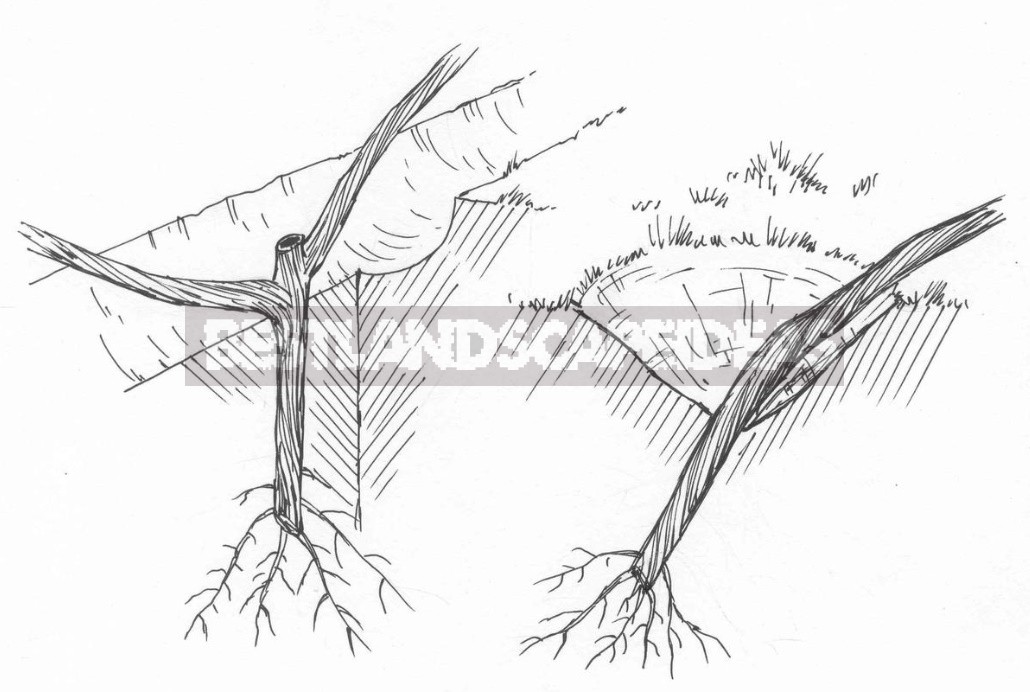
Direction of growth
The growth of seedlings in the first summer should always be directed vertically upwards: this strengthens the growth of shoots. For this purpose in a hole stick a temporary pole, or escape direct on a twine. In summer, you can bend the base of the shoot for the convenience of subsequent shelter, but the top should always grow up the support. Fallen and bent shoots do not grow, but branch, releasing up strong stepchildren.
The direction of the roots
The seedling always grows roots at an angle of about 45° obliquely downward. Roots that have not received such a slope are inhibited or die, and the seedling waits until the desired roots grow back. A weak seedling can take all summer. Therefore, to distribute the roots and give them a slope on the slopes of the soil mound – not an extra fuss! Too long roots are better shortened.
Mulching of planting pits
Freshly sprinkled pit in hot weather loses its supply of water for 2 weeks. Therefore, young planting is often recommended to water. But it is much better if the pit does not dry up so quickly! To do this, immediately after planting, the pit and the soil around it are mulched with organic matter-straw, leaves, husks, grass. Blanket thickness of 10 cm will allow watering seedlings three times less often.
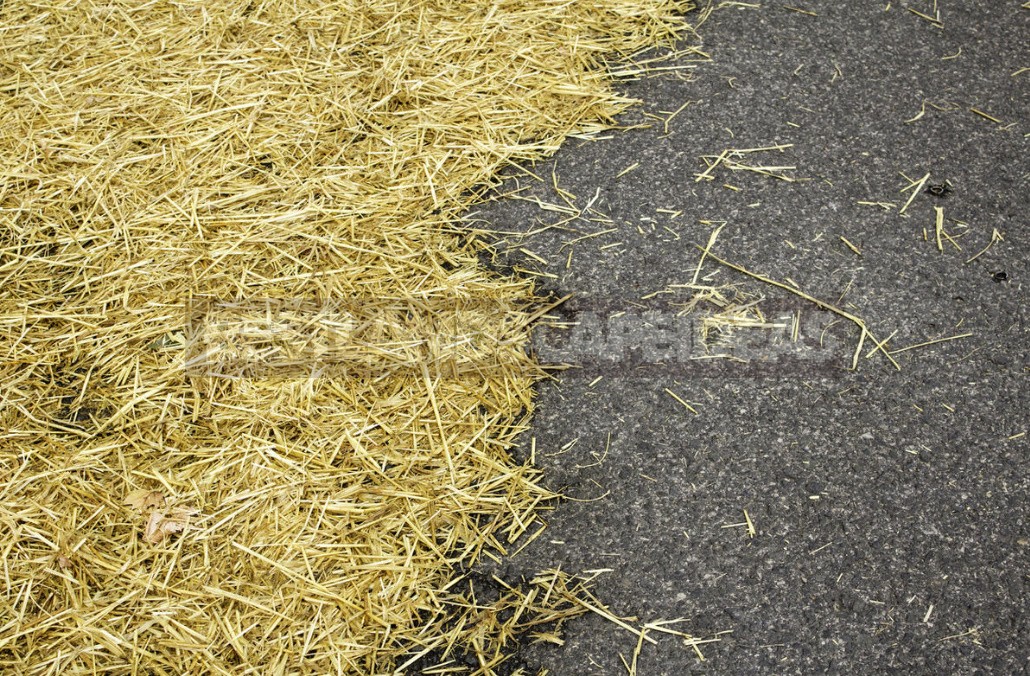
Do you prepare the soil for the vineyard?
Reading that a serious grower must necessarily shovel, mix with organic matter and sand, and then again put in place all the soil of the vineyard to a depth of one meter, the ordinary summer resident experiences a shock. Then comes in themselves: Yes no one not dug-and have all as something is growing! Why bother? It all depends on your goals.
If you lay a vineyard for commercial fruiting, then not to conduct a thorough preparation of the soil to a depth of 80-100 cm – a big mistake. Your investment will pay off many times. Only at high soil fertility table grapes, especially high-value new items, give a strong Bush and a large, high-quality clusters. That’s what we see in the catalogues. It is especially important to carry out soil preparation on difficult permeable and heavy loams.
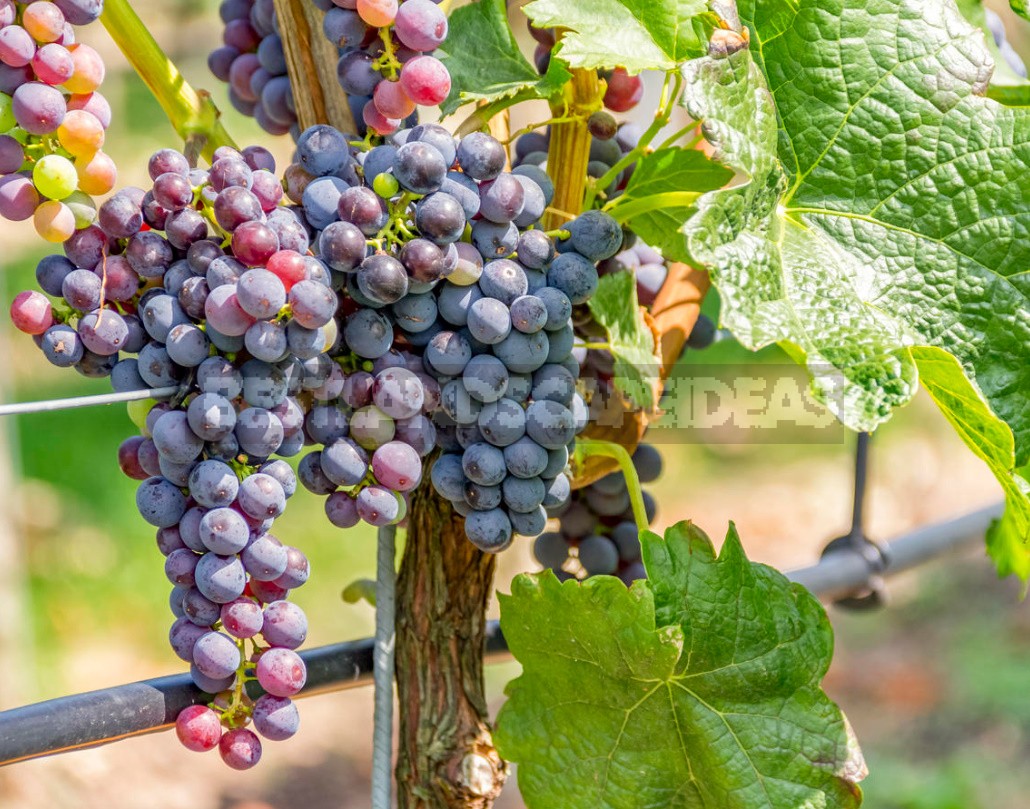
If you are a summer resident who does not claim special marketability and productivity, you can do with normal planting pits. And on light, loose soil with permeable subsoil, the pits can be quite small. If the subsoil is sandy or peat, you can even plant under a garden drill. There is enough organic mulch and fertilizing – and your bushes will develop normally.
So, if you are a viticulturist-merchant, then the construction of the vineyard will be a capital affair, and the soil is a mandatory basis for construction. Previously, the site was made a lot of humus, sand and plowed all by plow to a depth of 70-80 cm or manually, starting with the trenches for planting rows. It’s very time consuming. Many masters simply deliver layers of fertile soil and humus, and if necessary – and sand, raising the surface by a meter.
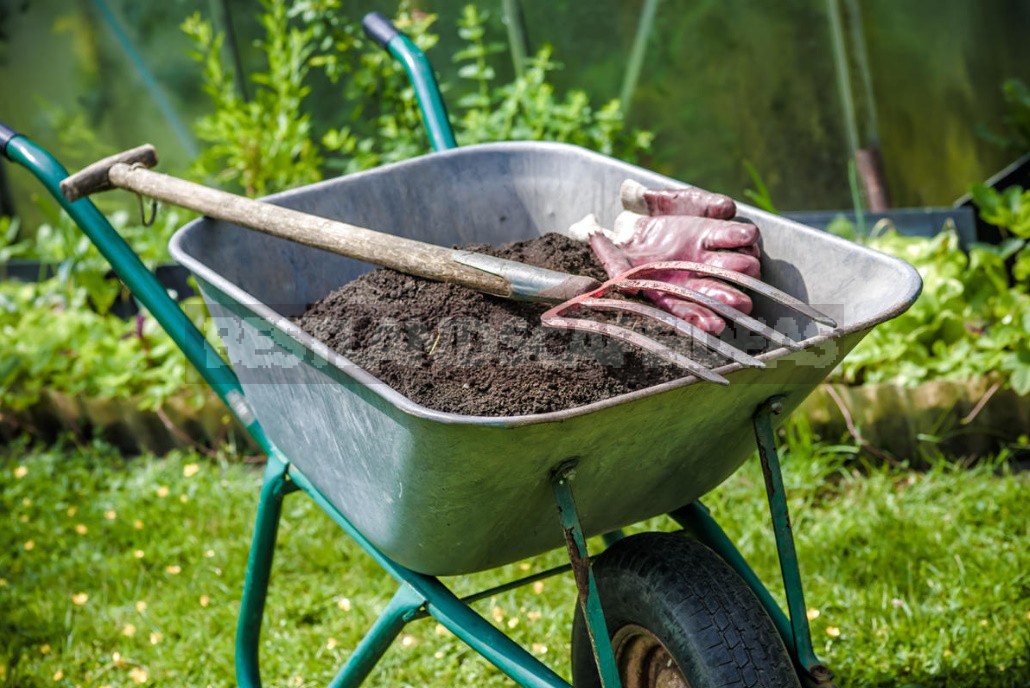
The plot can be prepared with less cost. First, deliver a lot of humus on the site. Then dig trenches under the rows using 3.5 m: the upper two feet of soil to tilt to one side, lower the other. Then the top layer of soil with the addition of humus to reset to the bottom. Next, fill the trenches, layering humus with the remaining soil. The Bush requires at least half a cube of humus.
Sand in the trench can not be added, the looseness of the loam is maintained, thanks to the constant shelter of a thick layer of mulch from straw. Vegetative plants in such soil are given for summer escape 3-4, 4-5 m in length. Without nitrogen fertilizers, it is possible to obtain bunches of 4-5 kg. Here’s the soil fertility for grapes and is called high.
Preparing trenches with organic matter is the most effective way to lay a vineyard in a damp climate, where the heaviness of the soils is complemented by their extreme nutritional poverty.
With the basic principles of competent planting of grapes you have already met, but this is only the beginning.











